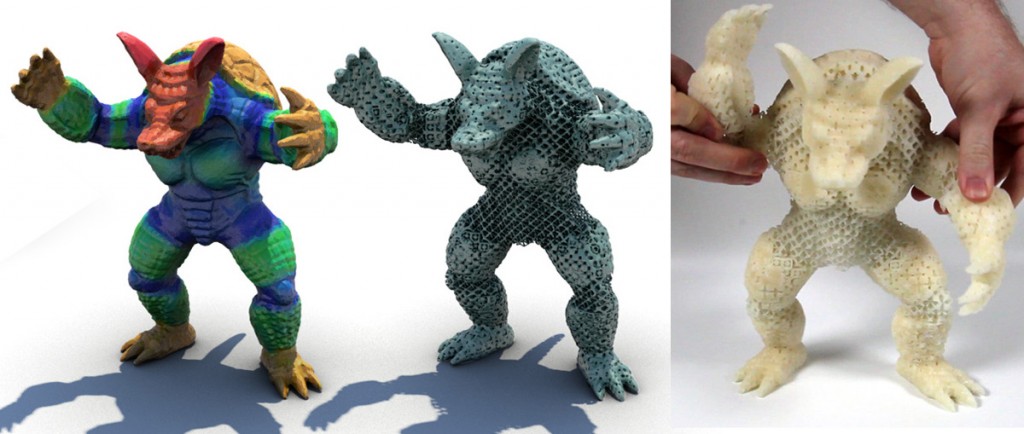Disney research has been up to some 3D printing research I think you’ll find pretty interesting: They’ve been using a method to change material properties throughout a print, without changing the printing medium itself. Take their 3D printed bear, for example: while the bear’s head can be hard, its belly can be flexible and its arms can be very bendable, even though the material used to 3D print the bear is the same hard material throughout.
The research team developed a family of microstructures with different elastic properties, allowing designers to employ a specific language to yield these various material properties at will. The team showed off their method by producing a few different toys. One was a teddy bear, one was a rabbit, and they also produced a pair of twin tubes that they said could be used as a manipulator for a soft robot.
“Many functional objects in our everyday life consist of elastic, deformable material, and the material properties are often inextricably linked to function,” according to Christian Schumacher,a Ph.D student at ETH Zurich and Disney Research. “3D printing usually involves only a single material or a very small set of materials. However, 3D printing easily produces complex, 3D microstructures which we can use to create metamaterials with properties beyond those of standard printer materials.” Schumacher and his colleagues will present their method for controlling elasticity at the upcoming ACM SIGGRAPH 2015, the International Conference on Computer Graphics and Interactive Techniques, taking place in Los Angeles Aug. 9-13.
Metamaterials aren’t really new, and microstructures can be manipulated in a wide variety of industrial 3D printers, like the Connex series from Stratasys, for example. Varying degrees of microstructures are created through the Objet Studio software, though they are usually spread throughout a few different materials. In this case, the Disney Research team demonstrated the ability to create different metamaterials with the same printing medium, in order to create different elastic regions within an object made from the same material.
The Disney Research team sampled a bunch of different microstructures, and quantified their properties, grouping microstructures with similar elastic behaviors together in the same families. The 8 mm-wide microstructures were then all stacked together in the object’s interior. To ensure that they connected properly, the researchers wrote an optimization algorithm for combining them. The team further showed that their method could be used to create action figurines. On these figures, you could see their method at work as the highly bendable joints move around, while the remainder of the limb is hard and inflexible.
This illustrates a principle that I think may be more pervasive than not in the 3D printing industry: often, an innovation occurs when people organize, clarify, and create a vocabulary from the increasingly similar, but differently named clutter of machines, methods, and software designs that pop up fresh every day. So, while similar principles demonstrated by Disney Research’s study may be being executed elsewhere in the industry, a unifying vocabulary will help elucidate larger patterns within in 3D printing.





